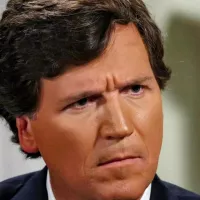South Dakota, a double landlocked Great Plains state in the North Central U.S., is named after the Dakota Sioux tribe, who are a significant portion of the population. It's the 17th-largest by area, but one of the least populous and densely populated states. Pierre is the capital, while Sioux Falls is the largest city. The Missouri River bisects the state into the geographically and socially distinct "East River" and "West River" regions. South Dakota borders North Dakota, Minnesota, Iowa, Nebraska, Wyoming, and Montana.
1903: Wind Cave National Park established
In 1903, Wind Cave National Park was established in the Black Hills. It features an extensive cave network and is home to a large herd of bison.
1912: Theodore Roosevelt's Progressive Party carries South Dakota
In 1912, Theodore Roosevelt's Progressive Party carried the state of South Dakota in the presidential election.
1925: Mount Rushmore National Memorial established
In 1925, Mount Rushmore National Memorial was established in the Black Hills. The sculpture of four U.S. Presidents was carved into the mountainside by sculptor Gutzon Borglum.
1930: The Dust Bowl begins in South Dakota
In 1930, a lack of rainfall, extremely high temperatures and inappropriate cultivation techniques combined to create the Dust Bowl in South Dakota. This led to the ruin of harvests and a decline in the state's population due to migration.
1932: Democratic Party carries South Dakota
In 1932, the Democratic Party carried the state of South Dakota in the presidential election.
February 17, 1936: Lowest recorded temperature in South Dakota
On February 17, 1936, the lowest recorded temperature in South Dakota was measured at −58 °F (−50 °C) in McIntosh.
1936: Democratic Party carries South Dakota
In 1936, the Democratic Party carried the state of South Dakota in the presidential election.
1940: South Dakota population declines due to the Dust Bowl and the Great Depression
By 1940, South Dakota's population had declined by more than 7% due to the combined effects of the Dust Bowl, local bank foreclosures, and the broader economic impact of the Great Depression.
1941: Economic stability returns with US entry into World War II
In 1941, economic stability returned to South Dakota as the U.S. entered World War II. Demand for the state's agricultural and industrial products grew as the nation mobilized for war.
1944: Pick-Sloan Plan passed for flood control and hydroelectricity
In 1944, the Pick–Sloan Plan was passed as part of the Flood Control Act of 1944, resulting in the construction of six large dams on the Missouri River. These dams, some of which are partially in South Dakota, provide flood control, hydroelectricity, and recreational opportunities.
1953: KELO-TV begins airing
In 1953, South Dakota's first television station, KELO-TV, began airing in Sioux Falls.
1955: Captain 11 begins airing
In 1955, KELO's Captain 11, an afternoon children's program, began airing.
1964: Billy Mills wins gold at the Tokyo Olympics
Billy Mills, from Pine Ridge, competed at the 1964 Summer Olympic Games in Tokyo, becoming the only American to win a gold medal in the 10,000-meter event.
1964: Democratic Party carries South Dakota
In 1964, the Democratic Party carried the state of South Dakota in the presidential election.
1972: George McGovern fails to carry home state
In 1972, Democrat George McGovern, a native of South Dakota, failed to carry his home state in the presidential election.
1974: Little House on the Prairie adapted as a television series
In 1974, "Little House on the Prairie" was adapted and produced as a television series, renewing popularity in the United States for Laura Ingalls Wilder's books.
1974: Last Democrat wins governorship
In 1974, a Democrat last won the governorship in South Dakota.
1977: Paul Goble based in the Black Hills
In 1977, Paul Goble, a children's book author and illustrator, was based in the Black Hills.
1978: Badlands National Park established
In 1978, Badlands National Park was established, featuring an eroded, brightly colored landscape surrounded by semi-arid grasslands.
1980: Supreme Court orders compensation for Lakota land
In 1980, the Supreme Court and Congress ordered compensation to be offered to the Lakota for the loss of their land. However, the Lakota refused to accept the compensation, continuing to insist on the return of their land.
1981: Citibank moves credit card operations to Sioux Falls
In 1981, Citibank moved its credit card operations from New York to Sioux Falls. This move was followed by several other financial companies and South Dakota became the first state to eliminate caps on interest rates.
1981: Citibank establishes operations in South Dakota
In 1981, Citibank, then the largest bank holding company in the United States, established national banking operations in South Dakota. This move was made to capitalize on the state's favorable banking regulations.
1981: Lakota Times founded
In 1981, Tim Giago founded the Lakota Times as a newspaper for the local American Indian community on the Pine Ridge Indian Reservation.
1990: Population decline in rural areas of South Dakota between 1990 and 2000
Between 1990 and the 2000 census, 30 of South Dakota's counties experienced population loss due to rural flight and declining family farming. Nine counties had a population loss of greater than 10%.
1991: Opening of the George S. Mickelson Trail
In 1991, South Dakota opened the George S. Mickelson Trail, a 109-mile rail trail located in the Black Hills, for cycling and other sports.
1995: Lack of telephone access on the Pine Ridge Indian Reservation in 1995
A 1995 study by the U.S. Census Bureau found that 58% of homes on the Pine Ridge Indian Reservation did not have a telephone.
1995: English declared the 'common language' of South Dakota
In 1995, the legislature passed a law to make English the "common language" of the state.
1996: Captain 11 ends
In 1996, Captain 11 ended its run as the nation's longest continuously running children's television program.
1999: Montana's Indian Education for All Act
In 1999, Montana enacted the Indian Education for All Act, which later served as a model for South Dakota's legislation.
2000: Largest ancestry groups in South Dakota in 2000
As of 2000, the five largest ancestry groups in South Dakota are German (40.7%), Norwegian (15.3%), Irish (10.4%), Native American (8.3%), and English (7.1%).
2000: Language spoken at home as of the 2000 census
As of the 2000 census, 1.90% of the population age 5 or older in South Dakota spoke German at home, while 1.51% spoke Lakota or Dakota, and 1.43% spoke Spanish.
2000: Rural population decline and aging population in South Dakota
As of the 2000 census, the decline in rural areas of South Dakota between 1990 and 2000 led to low birth rates and a lack of younger immigration, causing the median age of many of these counties to increase.
2000: Mike Miller leads Florida to NCAA Championship game
In 2000, Mike Miller of Mitchell led the University of Florida to the NCAA Championship game during his sophomore year.
2001: Democratic control of the Senate
During the Democratic control of the Senate in 2001 and 2002, Senator Tom Daschle served briefly as the Senate majority leader.
2001: Mike Miller wins NBA rookie of the year
In 2001, Mike Miller, of Mitchell, won the NBA rookie of the year award.
2002: American Indian voting carries Tim Johnson
In the 2002 election, American Indian voting carried Tim Johnson as the Democratic candidate by a margin of 532 votes.
2004: Electoral defeat of Tom Daschle
In 2004, Senator Tom Daschle faced electoral defeat in South Dakota.
2005: Lowest per capita total state tax rate
As of 2005, South Dakota had the lowest per capita total state tax rate in the United States, with no personal or corporate income taxes, inheritance taxes, or taxes on intangible personal property.
July 15, 2006: Highest recorded temperature in South Dakota
On July 15, 2006, the highest recorded temperature in South Dakota was measured at 120 °F (49 °C) in Usta.
2006: Primary and secondary school enrollment
As of 2006, South Dakota had a total primary and secondary school enrollment of 136,872, with 120,278 of these students being educated in the public school system.
2006: Tourism economic impact
In 2006, tourism in South Dakota provided an estimated 33,000 jobs and contributed over two billion dollars to the state's economy.
2007: Indian Education for All Act modeled legislation passed
In 2007, South Dakota passed legislation modeled after Montana's Indian Education for All Act, mandating education about Native American tribal history, culture, and heritage in all the schools.
2007: Hunting and fishing licenses sold in South Dakota
In 2007, over 275,000 hunting licenses and 175,000 fishing licenses were sold in South Dakota, contributing significantly to the state's economy.
2007: South Dakota State Jackrabbits move to Division I
In 2007, the South Dakota State Jackrabbits decided to move their sports teams from NCAA Division II to Division I.
2007: Homestake mine chosen for underground research facility
In 2007, the site of the recently closed Homestake gold mine near Lead was chosen as the location of a new underground research facility, the Deep Underground Science and Engineering Laboratory.
2008: Poverty rate in South Dakota in 2008
In 2008, 12.5% of South Dakota's population was below the poverty line.
2008: Premier annotated edition of Black Elk Speaks published
In 2008, a premier annotated edition of the book "Black Elk Speaks" was published.
2008: Rapid City Rush inaugural season
In 2008, the Rapid City Rush hockey team began its inaugural season in the ECHL at the Rushmore Plaza Civic Center.
2008: Average public school teacher salary
South Dakota's 2008 average public school teacher salary of $36,674 was the lowest in the nation, while the national average was $52,308.
2009: Ziebach County ranked as the poorest county in the nation in 2009
In 2009, Ziebach County in South Dakota ranked as the poorest county in the nation due to the limitations of climate and land and isolation from urban areas with more employment opportunities.
2010: Primary language of South Dakota residents in 2010
As of 2010, 93.46% (692,504) of South Dakota residents age 5 and older spoke English as their primary language. 6.54% of the population spoke a language other than English.
2010: South Dakota's gross state product and per capita personal income in 2010
As of 2010, the current-dollar gross state product of South Dakota was $39.8 billion, the fifth-smallest total state output in the U.S. The per capita personal income was $38,865, ranked 25th in the U.S.
2010: Lincoln County ranked seventh fastest-growing county in the United States in 2010
In 2010, Lincoln County near Sioux Falls was the seventh fastest-growing county (by percentage) in the United States. This growth, along with that of other areas, compensated for population losses in the rest of the state.
2010: Largest Christian denominations in South Dakota in 2010
In 2010, the largest Christian denominations in South Dakota were the Roman Catholic Church (148,883 members), the Evangelical Lutheran Church in America (ELCA) (112,649 members), and the United Methodist Church (UMC) (36,020 members).
2010: Population of largest cities
In 2010, the next eight largest cities in South Dakota, in order of descending population, were Aberdeen (28,495), Brookings (23,337), Watertown (22,655), Mitchell (15,660), Yankton (15,411), Huron (14,263), Pierre (14,091), and Spearfish (12,193).
July 2011: South Dakota's unemployment rate in July 2011
In July 2011, South Dakota's unemployment rate was 4.7%.
2011: Minority population of South Dakota younger than age 1 in 2011
According to the U.S. Census Bureau, 25.4% of South Dakota's population younger than age 1 were 'minorities' as of 2011, meaning they had at least one parent who was not non-Hispanic white.
2011: South Dakota Coyotes move to Division I
In 2011, the South Dakota Coyotes followed the South Dakota State Jackrabbits in moving their sports teams from NCAA Division II to Division I.
2014: Becky Hammon becomes assistant coach for San Antonio Spurs
In 2014, Becky Hammon, of Rapid City, became an assistant coach for the NBA's San Antonio Spurs.
2014: Largest religious denominations in South Dakota in 2014
Per the Pew Research Center's 2014 study, the largest Christian denominations in South Dakota were the Catholic Church (22%), evangelical Protestants (25%), and mainline Protestants (32%). Those unaffiliated with any religion represented 18% of the population.
2015: Mark Ellis retires from MLB
In 2015, Mark Ellis of Rapid City retired after playing for four MLB teams.
2015: Sturgis Motorcycle Rally attendance
In 2015, the annual five-day Sturgis Motorcycle Rally drew over 739,000 attendees in South Dakota.
2016: South Dakota votes for Donald Trump
In 2016, South Dakota voted for Republican nominee Donald Trump over Democratic nominee Hillary Clinton by a margin of 30%.
2018: South Dakota named the happiest, healthiest state
In 2018, Gallup-Sharecare State of American Well-Being Rankings named South Dakota the happiest, healthiest state in the United States.
2018: Kristi Noem wins gubernatorial election
In 2018, Republican congresswoman Kristi Noem defeated Democrat Billie Sutton in the gubernatorial election by a small margin, and Republican Dusty Johnson defeated Democrat Tim Bjorkman for the state's at-large seat in the U.S. House of Representatives.
2018: Top countries of origin for South Dakota's immigrants and refugees in 2018
In 2018, the top countries of origin for South Dakota's immigrants and refugees were Guatemala, the Philippines, Mexico, Sudan and Ethiopia.
January 5, 2019: Kristi Noem sworn in as governor
On January 5, 2019, Kristi Noem was sworn in as governor of South Dakota, becoming the first female governor of the state.
March 2019: "In God We Trust" bill passed
In March 2019, a Republican-supported bill passed in South Dakota requires all public schools to display "In God We Trust" in a prominent location.
2019: Sioux language designated as official indigenous language in 2019
In 2019, the language of the Great Sioux Nation, comprised of three dialects, Dakota, Lakota, and Nakota" was designated as the official indigenous language of South Dakota.
2020: Religious affiliation of adults in South Dakota in 2020
According to the Public Religion Research Institute, 73% of the adult population in South Dakota were Christian in 2020. 18% were religiously unaffiliated.
2020: South Dakota population demographics in 2020
In 2020, 6.5% of South Dakota's population was reported as under 5 years old, 24.5% under 18, and 17.7% were 65 or older. Females made up approximately 49.7% of the population. As of the 2020 census, South Dakota ranked fifth-lowest in the nation in population and population density.
2020: Rapid City population
In 2020, Rapid City was the second-largest city in South Dakota, with a population of 74,703 and a metropolitan area population of 144,558.
2020: Religious minorities in South Dakota in 2020
In 2020, a study found 978 adherents to the Baha'i Faith and 535 Muslims in South Dakota.
2020: South Dakota ranked as 22nd hardest state to vote in
In a 2020 study, South Dakota was ranked as the 22nd hardest state for citizens to vote in.
2020: 2020 United States Census
The 2020 United States census was conducted in 2020. The population of South Dakota as of July 1, 2022 was estimated to be 909,824, a 2.61% increase since the 2020 census.
2020: Largest Christian denominations in South Dakota in 2020
Through the Association of Religion Data Archives in 2020, Catholicism remained the largest Christian denomination in South Dakota, followed by the ELCA. Non-denominational Protestants numbered 63,992, becoming the third largest group of Christians throughout the state.
July 1, 2022: South Dakota population estimate
On July 1, 2022, South Dakota's population was estimated to be 909,824, which is a 2.61% increase since the 2020 United States census.
2022: Estimated number of homeless people in South Dakota in 2022
According to HUD's 2022 Annual Homeless Assessment Report, there were an estimated 1,389 homeless people in South Dakota in 2022.
2022: 2022 Census Estimate
According to the 2022 census estimate, the racial composition of the population was:
2022: South Dakota had the lowest drug overdose death rate in the US in 2022
In 2022, South Dakota had the lowest drug overdose death rate of any US state, at 11.3 per 100,000 people.
2022: Religious affiliation of South Dakota residents in 2022
In 2022, the Public Religion Research Institute determined 72% of South Dakota were Christian altogether, with Protestants at 48%, Catholics 22%, and Jehovah's Witnesses 2%. The religiously unaffiliated declined from 22% to 21% between 2020 and 2022.
2024: Republican dominance in South Dakota politics
As of 2024, Republicans hold a 2-to-1 voter registration advantage over Democrats in South Dakota and hold supermajorities in both the state House and the state Senate.
Mentioned in this timeline

Donald John Trump is an American politician media personality and...

Kristi Noem is an American politician who has served as...

Hillary Diane Rodham Clinton is an American politician lawyer and...
The United States of America is a federal republic located...
Sudan officially the Republic of the Sudan is a country...
World War II - was a global conflict between the...
Trending

20 days ago Naji Marshall Scores 18 Points and 8 Rebounds in Mavericks Win Against Clippers.

6 months ago Seth Curry Hints at Warriors Reunion, Talks Free Agency, Simmons Attracts Interest.
Penei Sewell is a professional American football offensive tackle for the Detroit Lions in the NFL Born in American Samoa...

8 months ago Max Christie's Connection to Doug Christie Explored Amid Mavericks' Winning Streak.

2 months ago Al Horford's Game Schedule Determined; Resting Against Grizzlies, Playing Clippers Tomorrow

8 months ago Quinten Post: Warriors' Rookie Ready for Big Time, X-Factor in Playoffs
Popular

Ben Shapiro is a prominent American conservative political commentator media...

XXXTentacion born Jahseh Dwayne Ricardo Onfroy was a controversial yet...

Candace Owens is an American conservative political commentator and author...

William Franklin Graham III commonly known as Franklin Graham is...
The Kennedy Center Honors are annual awards recognizing individuals and...

Tucker Carlson is an American conservative political commentator known for...
